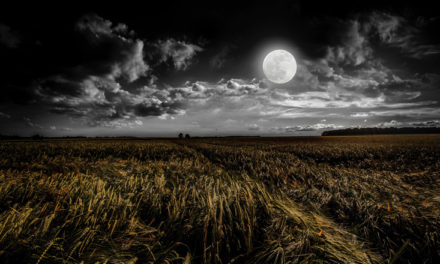Confronting Animism
Tena tātou katoa e te iwi mīhana… (Greetings to all the people in mission),
This month’s whakataukī (proverb) refers to an aspect of reality too readily dismissed by those beholden to ways of knowing shaped by the European Enlightenment project: “Mauri mahi, mauri ora; mauri noho, mauri mate” [When you work on/with your life-force it leads to wellbeing, if you ignore or let your life-force just sit it diminishes/dies].
I recently had the great pleasure of visiting some missions influencers in the UK with John Baxter-Brown, leader of Global Connections, the UK missions alliance (a sister agency to Missions Interlink NZ). It was a privilege to be exposed to missions thinking from a UK perspective. The similarities with our NZ experience were quite remarkable. There are many things I could comment on but one issue arose more often than I expected. It was undoubtedly because it was of interest to me and I drew it out of the conversation, but I was surprised at how readily the subject matter led to extended conversation. That issue was the topic of animism.
In one conversation I was told, “Oh, I have a friend up north who is developing and practicing a theology of Christian Animism”. I couldn’t really believe what I was hearing. Not because I thought the type of theological engagement described was necessarily wrong, but because that friend chose to embrace it as “animism”.
I have spent a good amount of time reflecting on the concept of animism from an indigenous perspective and I have concluded it is a constructed ideology that should have no place in our theology, missiology or missions anthropology.
Animism… is a constructed ideology that should have no place in our theology, missiology or missions anthropology.
Animism was popularised in the late 1800’s by Edward Taylor, an evolutionary anthropologist, who championed academic speculation about the ways ‘primitive people’ saw and interacted with the world. From the viewpoint of high-modern enlightenment, supposedly at the top of a hierarchy of knowing, animism relegated indigenous knowledge systems to the lowest point in the order of things, like a parent would view an infant.
This sense of the ‘mature’ modern thinker being superior to the supposedly ‘immature’ spiritually-attuned person persists in Western attitudes towards non-Western people and their belief systems. It remains pervasive in our classical (modernist) understanding of missions. I am concerned that this construct has created a significant barrier to the spread of the Gospel over the past 150 years since the introduction of evolution theory. For all its fight against evolutionism, it is remarkable how theology and the practice of missions has been defined by the theory, whether in defence against it or adopting certain aspects of it such as ideas about the evolution and hierarchy of religious beliefs.
In my research to date I have found Western knowledge systems to be the only framework to refuse to acknowledge that a life-force emanating from a Divine source animates creation. The modernist would argue that that is indicative of its superiority as a knowledge system, but I cannot help but view it as an abnormality. It is certainly not Biblically tenable, yet some Western theologians persist in trying to explain our reality as disconnected from a Divine life-force.
The reason I believe this is a hindrance to the spread of the Gospel is because the Western gospel narrative requires people to renounce belief in that which is intuitively core to their being—that they are intimately connected to the Divine (albeit imperfectly) and therefore to all of creation at an unseen level. I concede, this may immediately give rise to cries of “new ageism” if not “animism”, but I am speaking of a valid and orthodox theological perspective known as panentheism (not to be confused with pantheism)—that God, in some mysterious fashion, pervades and still holds together all of creation. We see this most overtly in Col 1:15-17.
This is the indigenous way of interacting with creation. It is central to Māori knowledge systems. Mauri is understood as life-force, and mauri-ora as activated (or animated) life-force. From a Christian perspective, mauri emanates from God, and mauri ora is the God-breathed/activated aspect of all living things (cf. Gen 2:7). From the narrative of Genesis 3, we can see that mauri/ora gets corrupted, leading to the relationship-carnage we call sin. Because of the death and resurrection of Christ, the Holy Spirit is now available to purify that corruption for those who follow Christ, releasing in us life (mauri-ora) in its fullness (uncorrupted flow)—with positive flow-on effect for all our relationships, whether with people or the rest of creation.
I believe that removing the spectre of animism from our thinking frees us to allow the Holy Spirit to activate life in those who choose to follow Jesus in much more dynamic ways. It makes far more sense to the followers of other belief systems (even for Western post-Christendom spiritualities), and makes the gospel more relatable as a result.
In closing, I need to clarify that witchcraft and idolatry in all forms remain reprehensible. I am not advocating that. But by labelling a deep appreciation of Divine life-force in creation as inherently evil, we can throw the baby out with the bathwater. I am convinced that with a shift in understanding of how we are integrated in God, we can work more effectively with deeper unity as we #stayonmission,
Whakapaingia te Atua, to tatou kaiunga ki te ao whanui (Praise to God, who sends us into the world),
Jay






